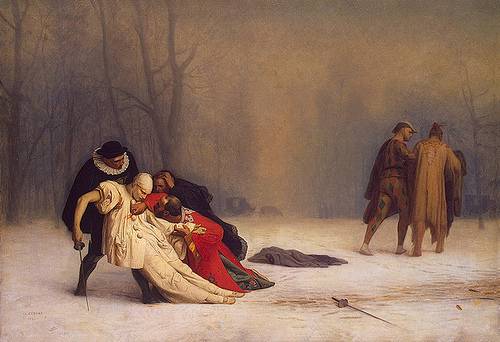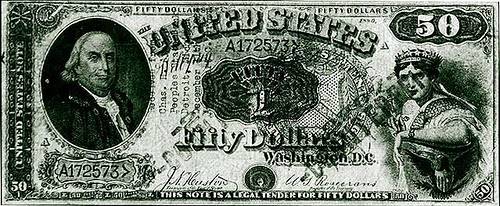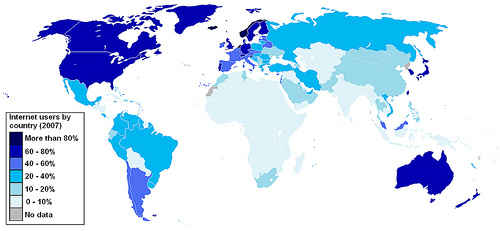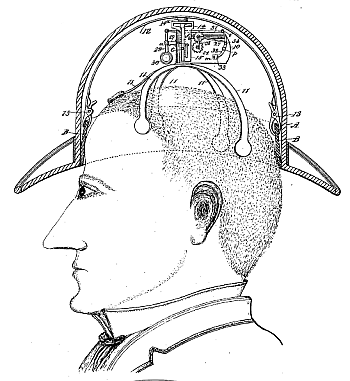
Duel After a Masquerade Ball, by Jean-Léon Gérôme (1857).
For all their romance, duels got a bit silly. English poet Mark Akenside escaped a confrontation with a Counsellor Ballow only because one refused to fight in the morning and the other in the afternoon.
In France in 1843, two young men agreed to a duel using billiard balls at 12 paces. Melfant drew the red ball, warned his adversary, “I am going to kill you at the first throw,” and did precisely that, hitting Lenfant in the forehead.
Magnificently, two Frenchmen fought a duel by balloon over Paris in 1808, ascending from the Tuileries and firing blunderbusses at one another. M. de Grandpré sent a ball through M. Le Pique’s balloon, which plunged, killing him and his second. The lady’s response is not recorded.




